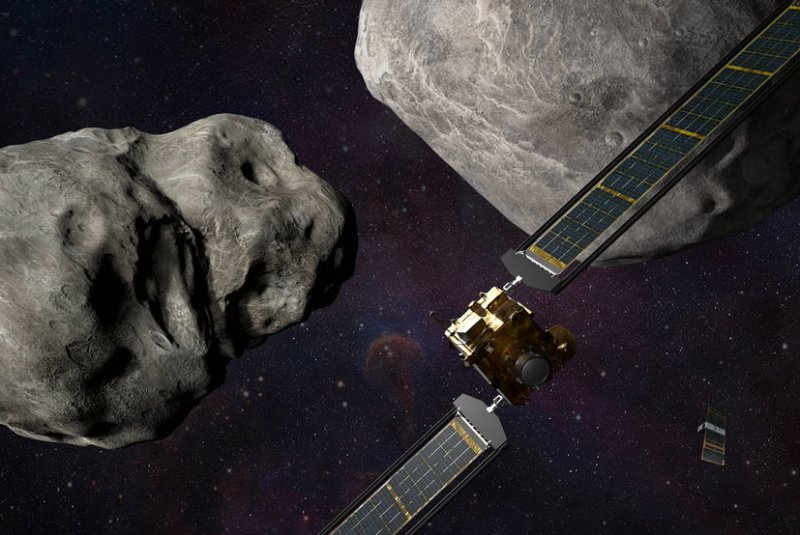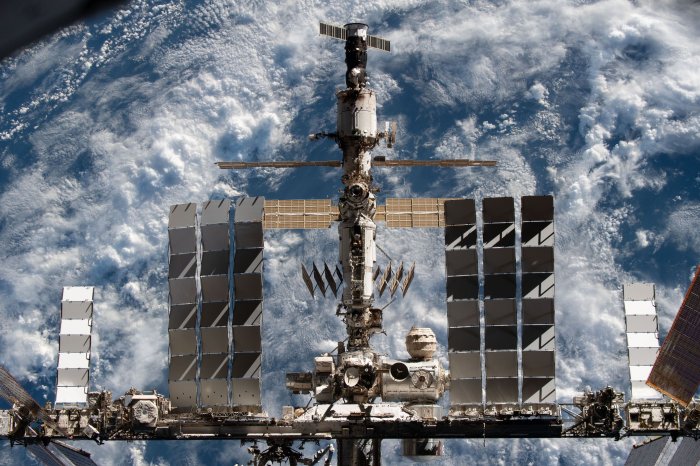1 of 5 | An image depicts the DART spacecraft nearing a collision with the asteroid Dimorphos, with the LICIACube small satellite observing, at left. Image courtesy of Steve Gribben/Johns Hopkins University
Nov. 5 (UPI) -- NASA plans to launch a spacecraft as early as Nov. 23 and crash it into an asteroid next year so scientists can try to understand how to redirect dangerous space objects away from potential catastrophic Earth collisions.
The mission is NASA's first flight demonstration for planetary defense, space agency officials said.
The Double Asteroid Redirection Test, or DART, is scheduled for launch at 10:20 p.m. PST on a SpaceX Falcon 9 rocket from Vandenberg Space Force Base in California. The launch window is instantaneous, meaning it must launch at that time or wait for another day, according to NASA.
The Didymos asteroid system, actually twin bodies circling each other, will be near Earth for months, so the mission has 84 days to launch for an arrival at the binary asteroid between Sept. 26 and Oct. 1.
Didymos presents no threat to Earth, but will travel close enough that the $330 million DART mission can reach it relatively quickly, said Lindley Johnson, NASA's planetary defense officer.
"We've spent a good deal of effort, planning and coordinating with other agencies and nations on what we might do and who is going to do what as far as response to an impact threat," Johnson said.
"This isn't going to destroy the asteroid. It just going to give it a small nudge," Nancy Chabot, DART coordination lead at Maryland-based Johns Hopkins University Applied Physics Laboratory, said at a press conference Thursday.
NASA isn't sure how much of a nudge the spacecraft will deliver, and "that's the goal for the DART mission," Chabot said. Data from the impact will be used to understand and plot possible future missions.
The DART spacecraft, about the size of two small refrigerators, will travel to the asteroid, observe it and release a smaller unit called LICIACube that will monitor DART as it strikes the Didymos moonlet Dimorphos. DART will hit the moonlet head-on while traveling at 15,000 mph.
LICIACube, the first interplanetary spacecraft built by the Italian Space Agency, will relay video and other data back to Earth.
NASA chose the Didymos system of two asteroids because it offers a unique chance to obtain precise measurements from a small impact, Chabot said.
"The DART spacecraft itself will be completely destroyed and throw out a cloud of debris," she said.
Telescopes on Earth will observe Dimorphos' change in velocity as a result of the impact.
But the observations from LICIACube also are crucial, said Andy Cheng, DART investigation team lead with Johns Hopkins.
"We need to do this because ... DART is going to blast many tons of material off Dimorphos, maybe thousands of tons, and we need to know how much there is, how fast it's going and where it's headed for our calculations," Cheng said.
NASA and other scientists will continue to observe the new dynamics of the Didymos system through spring 2023, he said.
The International Space Station is pictured from the SpaceX Crew Dragon Endeavour during a flyaround of the orbiting lab that took place following its undocking from the Harmony module’s space-facing port on November 8. Photo courtesy of NASA
















